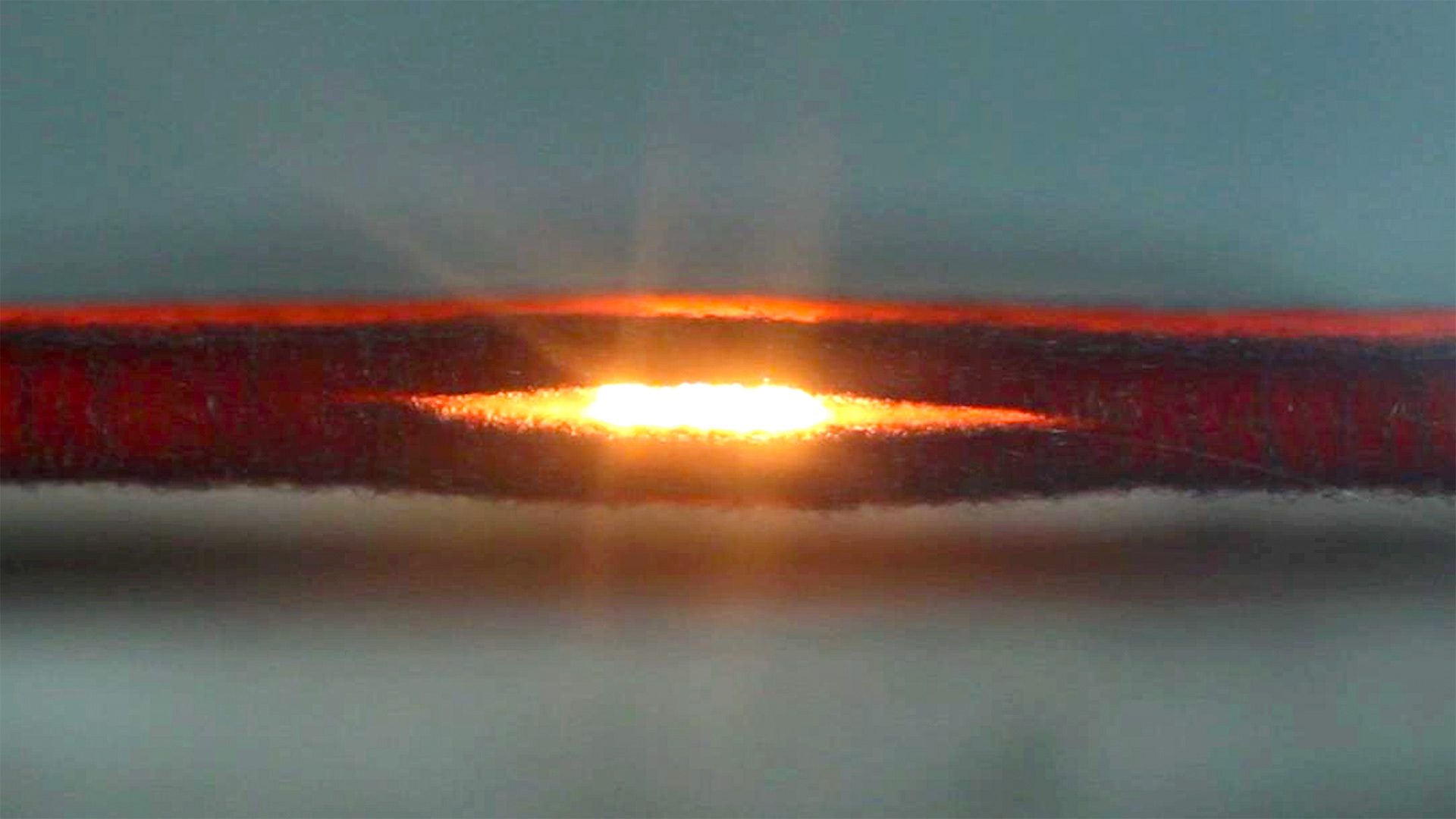- May 01, 2020
- By Melissa Andreychek And Katie Holland
Scientists in the A. James Clark School of Engineering have reinvented and dramatically shortened a 26,000-year-old manufacturing process for ceramic materials that has promising applications for solid-state batteries, fuel cells and 3D printing technologies.
Conventional ceramic sintering—part of the firing process used in the manufacture of ceramic objects—often takes hours. But a Maryland research team has invented an ultrafast high-temperature sintering method that both meets the needs of modern ceramics and fosters the discovery of new material innovations.
The study, led by Liangbing Hu, Herbert Rabin Distinguished Professor of the A. James Clark School of Engineering and director of the Center for Materials Innovation at UMD, was published on today’s cover of Science. Chengwei Wang, an assistant research scientist in Hu’s group, served as first author on the study.
Conventional sintering techniques were practiced by ancient cultures in Egypt, China, India and elsewhere, according to archeological finds, as well as by modern manufacturers. They require a lengthy process of heating a furnace and then “bake” the ceramic material—particularly problematic in the development of electrolytes for solid-state batteries.
Alternative sintering technologies (such as microwave-assisted sintering, spark plasma sintering, and flash sintering) are limited for a variety of reasons, often because they are material-specific and/or expensive.
The Maryland team’s new method of ultrafast high-temperature sintering offers high heating and high cooling rates, even temperature distribution and sintering temperatures of up to 3,000 degrees Celsius. Combined, these processes require fewer than 10 seconds of total processing time—more than 1,000 times faster than the traditional furnace approach of sintering.
“With this invention, we ‘sandwiched’ a pressed green pellet of ceramic precursor powders between two strips of carbon that quickly heated the pellet through radiation and conduction, creating a consistent high-temperature environment that forced the ceramic powder to solidify quickly,” Hu said. “The temperature is high enough to sinter basically any ceramic material. This patented process can be extended to other membranes beyond ceramics.”
The study also included Associate Professor Yifei Mo, department chair and Professor J.C. Zhao and Visiting Research Professor Howard Wang, all in materials science and engineering; Professor Bao Yang in mechanical engineering, Professor Jian Luo of the University of California, San Diego; Assistant Professor Xiaoyu Zheng and department chair and Professor Bruce Dunn, both of the University of California, Los Angeles.
The rapid sintering technology is being commercialized through HighT-Tech LLC, a UMD spinoff company with a focus on a range of high temperature technologies.
“Ultrafast high-temperature sintering represents a breakthrough in ultrafast sintering technologies, not only because of its general applicability to a broad range of functional materials, but also due to a great potential of creating non-equilibrium bulk materials via retaining or generating extra defects,” Luo said.
